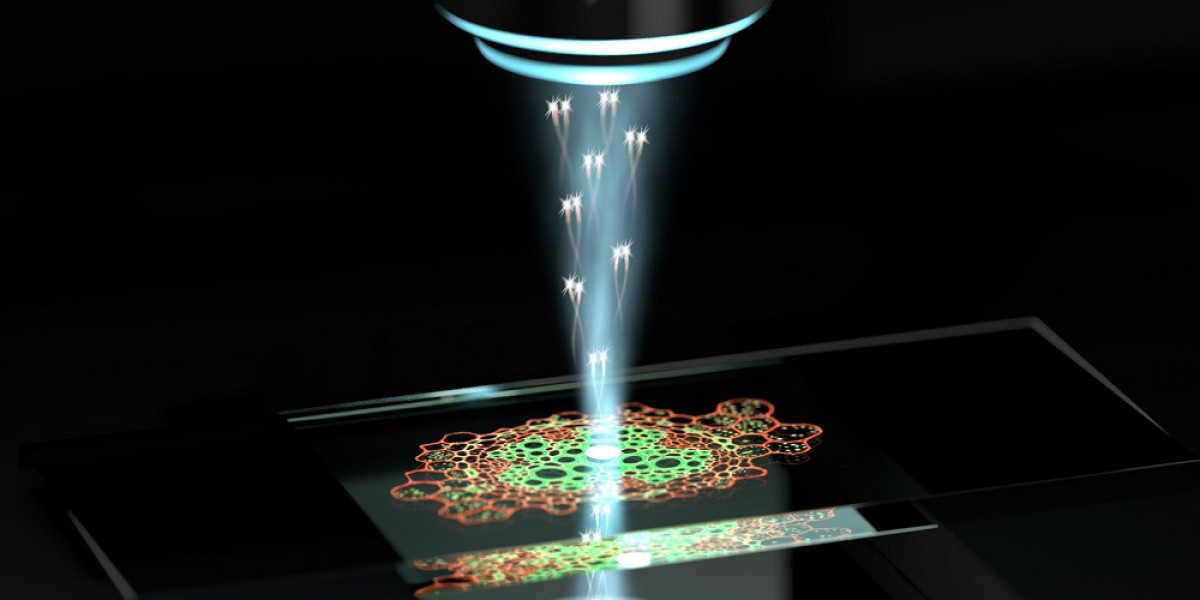The Biophotonics Market is rapidly broadening its horizons, driven by innovative advances in drug delivery and cellular imaging systems. These cutting-edge technologies leverage light-based tools to improve targeted therapeutic delivery and enable real-time visualization of cellular processes. This article explores the expanding scope of biophotonics in revolutionizing treatment efficacy and enhancing cellular-level understanding in medical and life sciences.
Expanding the Horizons of Drug Delivery with Biophotonics
Drug delivery technologies have traditionally faced challenges such as non-specific distribution, systemic toxicity, and limited control over release timing. Biophotonics offers solutions by enabling precise, targeted delivery through light-activated mechanisms.
Photodynamic Therapy and Photothermal Drug Delivery
Photodynamic therapy (PDT) uses photosensitizing agents activated by specific wavelengths of light to produce cytotoxic reactive oxygen species, selectively destroying diseased cells.
Innovations in photosensitizers enhance tissue penetration and reduce side effects.
Combined with drug-loaded nanoparticles, PDT allows controlled release of therapeutic agents triggered by light.
Photothermal therapy utilizes light to heat targeted tissues, aiding localized drug activation and delivery.
Light-Responsive Nanocarriers
Recent research focuses on developing light-responsive nanocarriers—liposomes, micelles, and polymers that release drugs upon light exposure.
These carriers offer spatial and temporal control over drug release, minimizing systemic toxicity.
Near-infrared (NIR) light-responsive systems enable deeper tissue penetration and non-invasive activation.
Multi-stimuli-responsive carriers combine light with pH or enzyme triggers for enhanced specificity.
Advantages and Clinical Potential
Biophotonic drug delivery systems promise:
Improved therapeutic index through targeted action.
Reduced dosage frequency and side effects.
Enhanced patient compliance with minimally invasive procedures.
Clinical trials are underway exploring these systems in oncology, dermatology, and infectious disease treatment.
Advancements in Cellular Imaging Systems
Cellular imaging is fundamental for understanding disease mechanisms, drug effects, and cellular behavior in real time. Biophotonics is expanding this scope through innovative imaging platforms offering high resolution, sensitivity, and functional insights.
Super-Resolution Microscopy
Super-resolution techniques, such as STED (Stimulated Emission Depletion) and PALM (Photoactivated Localization Microscopy), overcome traditional diffraction limits of light microscopy, enabling visualization of sub-cellular structures at nanometer scale.
These advances allow researchers to study molecular interactions and protein dynamics with unprecedented detail.
Super-resolution imaging is vital for cancer research, neurobiology, and drug development.
Multiphoton and Light-Sheet Microscopy
Multiphoton microscopy uses near-infrared light for deep tissue imaging with reduced phototoxicity, while light-sheet microscopy offers rapid 3D imaging with minimal photodamage.
These modalities are critical for live-cell imaging, enabling long-term observation of cellular processes.
Applications include stem cell research, developmental biology, and real-time monitoring of drug effects.
Label-Free Imaging Techniques
Emerging label-free biophotonic imaging methods, such as coherent anti-Stokes Raman scattering (CARS) and second-harmonic generation (SHG), enable visualization of cellular structures without fluorescent tags.
This reduces interference with cell function and facilitates study of native cellular environments.
Label-free imaging aids in clinical diagnostics and intraoperative guidance.
Integration of Imaging and Drug Delivery: Theranostics
A key frontier in biophotonics is theranostics—integrated systems that combine diagnostics and therapy using optical technologies.
Nanoparticles can simultaneously image diseased tissue and deliver drugs activated by light.
Real-time imaging guides and monitors treatment efficacy, allowing personalized therapeutic regimens.
Theranostic platforms are under intense research for applications in cancer, cardiovascular diseases, and neurological disorders.
Market Impact and Future Prospects
The expanded scope of biophotonics in drug delivery and cellular imaging is driving market growth through:
Increased R&D investments targeting targeted therapies and advanced imaging tools.
Growing demand for personalized medicine solutions.
Regulatory approvals accelerating commercialization of integrated platforms.
Collaborations between photonics companies, pharmaceutical firms, and research institutions.
Looking forward, innovations such as wearable biophotonic sensors for drug monitoring and AI-enhanced imaging analysis will further transform healthcare.
Conclusion
The Biophotonics Market is exploring exciting new frontiers with breakthroughs in drug delivery and cellular imaging systems. These innovations promise more effective, personalized therapies and deeper biological insights, marking a pivotal shift in medical treatment and research. Continued technological advancement and strategic collaboration will be crucial to unlocking the full potential of these biophotonic applications.








